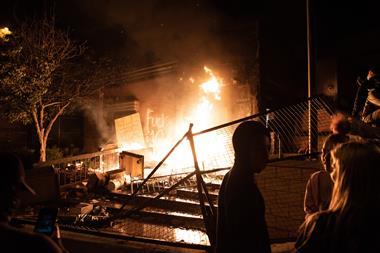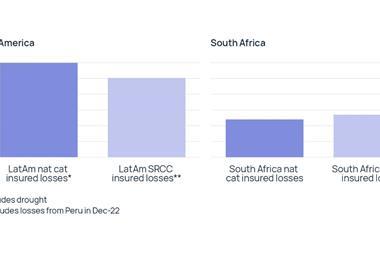Civil unrest risks has risen substantially, causing billions of dollars in property damage and business interruption
Anger over growing social inequality and the cost-of-living, foundering faith in governments and institutions and increasingly polarised politics, together with a rise in activism and environmental concerns, are the main factors expected to fuel ongoing incidences of strikes, riots and civil commotion (SRCC) around the world, according to a new report from Allianz Global Corporate & Specialty (AGCS).
The heightened SRCC risk environment means businesses need to remain vigilant about the different threats such activity can pose. In addition to buildings or assets suffering costly material damage, operations can be severely disrupted, resulting in significant loss of income.
“Incidences of strikes, riots and civil commotion have not only increased in recent years, they are also becoming more intense and catastrophic. These types of events are making our era one of uncertainty,” says Srdjan Todorovic, head of Political Violence and Hostile Environment Solutions at AGCS.
“We have seen multibillion-dollar loss events in the US, Chile, and Colombia. The threat is changing, and although many of the reasons for it are universal – whether economic, political, or environmental – it can play out differently in different regions, with various levels of violence and disruption.
”Operational and security management within organisations should view the current climate as a catalyst for evaluating best practices and policies around preparing locations and employees for potential civil unrest and building resilience.”
Social media fuels speed of unrest
Civil unrest risks rose in over 50% of countries between Q2 and Q3 2022 alone, according to the Verisk Maplecroft Civil Unrest Index - out of 198 countries, 101 saw an increase in risk.
Since 2017, more than 400 significant anti-government protests have erupted worldwide. Unrest is now spreading more quickly and widely thanks in part to the galvanising effect of social media. This means multiple locations can be impacted, potentially resulting in multiple losses for companies.
Such events are also lasting for longer - almost a quarter of the 400 significant anti-governments protests since 2017 were in excess of three months – helping to ensure financial costs are mounting.
Reported damages from just six civil unrest events around the world between 2018 and 2023 resulted in at least $12 billion in economic/insured losses.
Five risk drivers of civil unrest
In the report AGCS’ political violence team highlight the five main factors they expect to power further SRCC activity in 2023 and beyond:
- The ongoing cost-of-living crisis: Although inflation is now thought to have peaked in many countries the after-effects continue to take their toll. Just over half of protests globally in 2022 were triggered by economic issues, and public confidence in the financial future is shaky.
- Distrust of governments and institutions: Governments thought to be corrupt or perceived to have been in power for too long can bring people out onto the streets. Economic grievances about food, fuel, pay, or pensions can expand from issues-led demonstrations to wider anti-government movements. Europe continues to be hit by multiple strikes over pay and working conditions.
- Increasing polarisation: Political divisions are stoking tensions around the world undermining social cohesion and escalating conflict. Polarised opinions can become particularly entrenched on social media and in some countries such polarisation is turning violent. Recent years have seen a big shift to the left and the right in many countries with few liberal democracies maintaining a sense of balance where political parties compete for the centre ground.
- A rise in activism: In recent years, movements that have been significantly galvanised by social media include the global Occupy movement against economic inequality, the Black Lives Matter protests highlighting racial inequality, the #MeToo movement against sexual abuse and harassment, and the Stop the Steal campaign, which falsely claimed electoral fraud in the election of US president Joe Biden.
- Climate and environmental concerns: Where governments are seen to row back on climate-change progress, such as fracking or reopening coalmines as a solution to reliance on Russian gas, there could be unrest. Businesses that are deemed to profit excessively from fossil fuels while many people struggle could also be targeted.
Test and update continuity plans
Incidences of civil unrest can be difficult to predict because they often start with a specific trigger such as a change in government, a piece of new legislation or a sudden price rise.
However, there are many things businesses can do to minimise disruption, such as implementing, and then regularly testing and updating, a business continuity plan.
Specialist insurance can help protect companies against damage resulting from political violence, as well as any interruption to the business. Policies can cover civil war, SRCC, terrorism and war.




















No comments yet